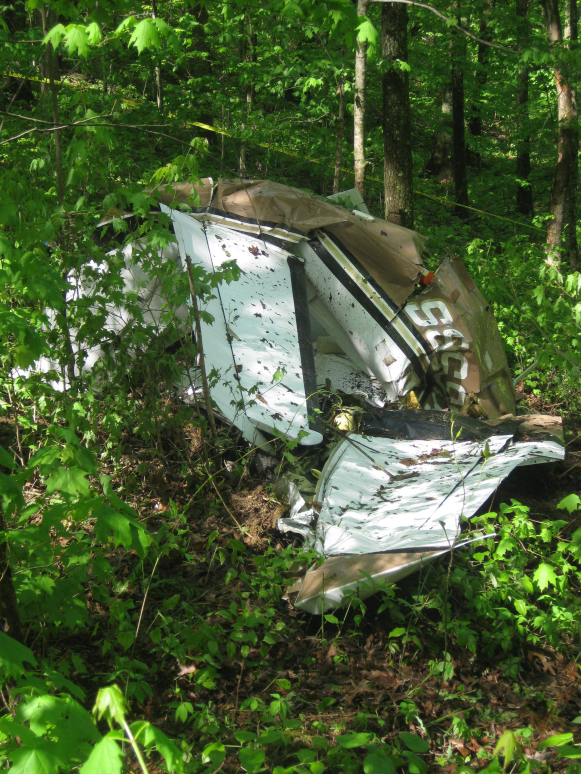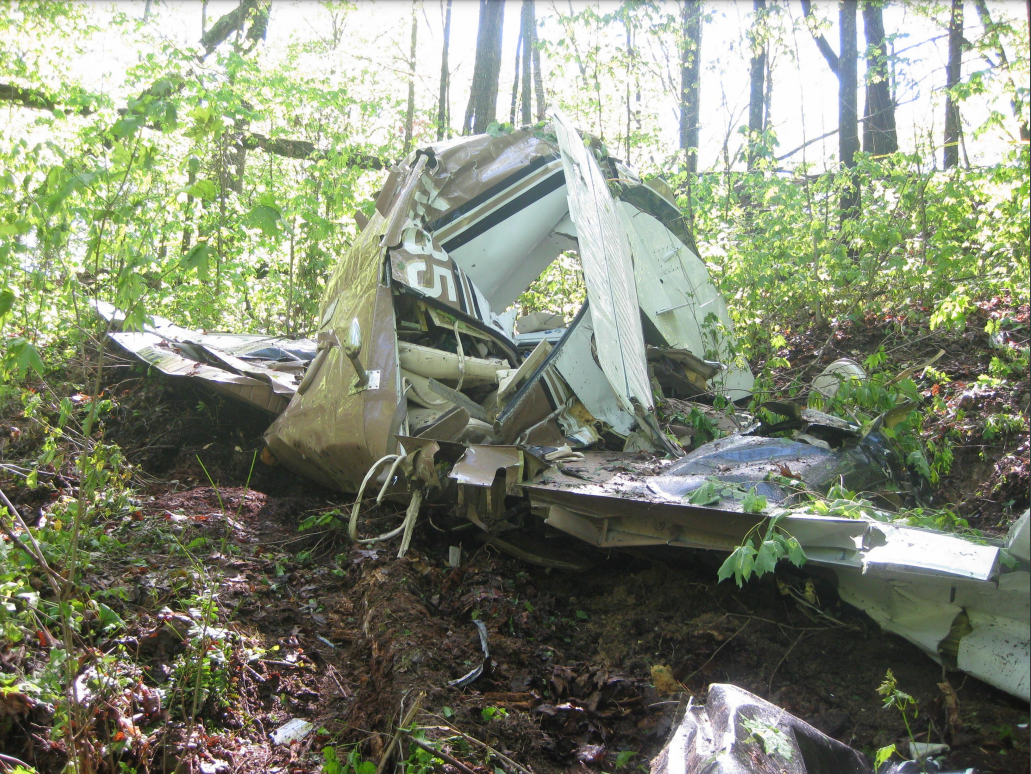
ASN Wikibase Occurrence # 74101
This information is added by users of ASN. Neither ASN nor the Flight Safety Foundation are responsible for the completeness or correctness of this information.
If you feel this information is incomplete or incorrect, you can submit corrected information.
| Date: | Tuesday 27 April 2010 |
| Time: | 12:26 |
| Type: |  Beechcraft 58 Baron |
| Owner/operator: | Private |
| Registration: | N1856S |
| MSN: | TH-1300 |
| Year of manufacture: | 1981 |
| Total airframe hrs: | 5840 hours |
| Engine model: | Continental IO 520 SERIES |
| Fatalities: | Fatalities: 2 / Occupants: 2 |
| Aircraft damage: | Substantial |
| Category: | Accident |
| Location: | Bear Branch, KY -
 United States of America United States of America
|
| Phase: | En route |
| Nature: | Private |
| Departure airport: | Frederick Municipal Airport, MD (FDK) |
| Olive Branch Airport, MS (OLV) | |
| Investigating agency: | NTSB |
| Confidence Rating: |
The pilot was on an instrument flight rules flight plan, and was en route to his destination, when he contacted air traffic control and requested a lower altitude because the airplane was losing airspeed. The pilot was instructed to descent to 7,000 feet. The pilot acknowledged the clearance and requested a lower altitude because he was still losing airspeed. The last altitude that the pilot was issued was 5,000 feet. The airplane was last observed by radar at 5,000 feet and there were no further communication between him and the controller.
A witness stated that he heard an airplane flying overhead and the engines were surging. He described the weather as extremely low clouds, mist and rain.
AIRMET Zulu was current for the area for moderate icing conditions from approximately 5,000 to 16,000 feet mean sea level. The pilot obtained a preflight weather briefing which included the AIRMET. The base reflectivity image with the overlaid flight track of the accident airplane indicated that the flight was maneuvering in echoes that indicated favorable conditions for icing during the flight. The airplane was approved for flight into known icing conditions because it was equipped with de-icing systems. The airplane was also equipped with an onboard weather radar system; however, it is unknown if the weather radar equipment was operating at the time of the accident.
A postaccident examination of the wreckage revealed no preimpact anomalies with the engine, airframe or systems that would have precluded normal operation. It is probable that the airplane may have accumulated ice on its surfaces and the pilot was unable to maintain an adequate airspeed during the descent.
Probable Cause: The pilot's improper in-flight planning/decision, his continued flight into adverse weather (icing conditions), and failure to maintain an adequate airspeed during the emergency descent.
Accident investigation:
 |
|
Sources:
NTSB
Location
Images:



Photos(c): NTSB
Revision history:
| Date/time | Contributor | Updates |
|---|---|---|
| 28-Apr-2010 00:43 | RobertMB | Added |
| 21-Dec-2016 19:25 | ASN Update Bot | Updated [Time, Damage, Category, Investigating agency] |
| 26-Nov-2017 16:35 | ASN Update Bot | Updated [Operator, Other fatalities, Departure airport, Destination airport, Source, Narrative] |
| 13-Mar-2022 05:08 | Captain Adam | Updated [Other fatalities, Location, Departure airport, Destination airport, Narrative, Photo] |
| 13-Mar-2022 05:09 | Captain Adam | Updated [Photo] |
| 13-Mar-2022 05:09 | Captain Adam | Updated [Photo] |
Corrections or additions? ... Edit this accident description
The Aviation Safety Network is an exclusive service provided by:


 ©2024 Flight Safety Foundation
©2024 Flight Safety Foundation